Order: Passeriformes. Family: Platysteiridae
Description
13 cm. The Cape Batis is the most heavily marked batis.
Adult male: Forehead, crown, nape and hind neck grey. Black face mask extends from lores, above and below eyes, across ear coverts to nape. Mantle, scapulars, back, rump and upper tail coverts reddish olive-brown. Tail black, outermost rectrices with white outer webs and tips, T2-T5 narrowly tipped white. Primaries and secondaries blackish, narrowly edged white; tertials blackish, with broad rufous edges. Greater and median primary coverts blackish. Outer greater coverts dark grey, inners rufous. Median coverts rufous, lesser coverts dark grey. Underside of wings dark grey. Chin, throat and sides of neck white, breast with broad black band, belly white. Flanks russet to chestnut, thighs blackish. Undertail coverts and vent white; undertail dark grey. Bill black. Eyes lemon yellow to yellowish orange. Legs and feet black.
Male is the only batis in the region with completely russet-washed wings and flanks.
The female and juvenile plumages differ in that the breast band is narrower and rufous, not black, and there is a small rufous patch on the throat. The female might be mistaken for the Chinspot Batis but has the russet breast band extending down the sides of the breast and over the flanks.
Distribution
Occurs from Tanzania, Zambia and Malawi to southern Africa. Here it is locally common in eastern Zimbabwe bordering on Mozambique, south-central Zimbabwe, Limpopo Province, KwaZulu-Natal, Eastern Cape and Western Cape.
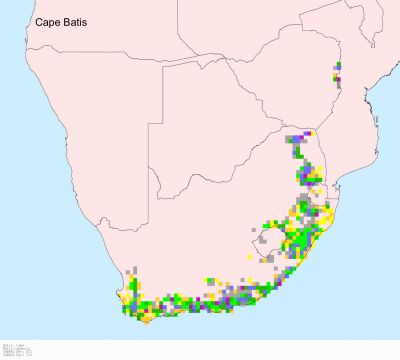
Habitat
Highly adaptable, it occupies a wide range of habitats, such as Afromontane and Evergreen forest, closed woodland, valley bushveld, Acacia woodland along watercourses, plantations, orchards and gardens.
Diet
It eats a variety of insect prey, doing most of its foraging in the lower branches of trees or bushes, gleaning prey from leaves or bark.
Breeding
Both sexes construct the nest, which is a small, thickly-walled cup, made of dry plant material bound together by spider web, lined with fine plant detritus or hair. It is usually placed on a horizontal branch of small shrub, about 1-9, usually 3 m above ground. Nests aren't usually concealed by vegetation, but they are often difficult to find due to very dark lighting conditions. Egg-laying season is from August-January, peaking from October-December. It lays 1-3 eggs, which are incubated solely by the female, for about 17-21 days with the male bringing her food. The chicks are mainly brooded by the female, who feeds them and herself with food provided by the male. They are brooded and fed at greater intervals as they get older, until eventually they leave the nest at about 16 days old.
Host of Klaas's Cuckoo.
Call
Most common call 3-note whew-whew-whew, also 'stone rubbing' sounds. Listen to Bird Call.
Status
Common endemic resident.
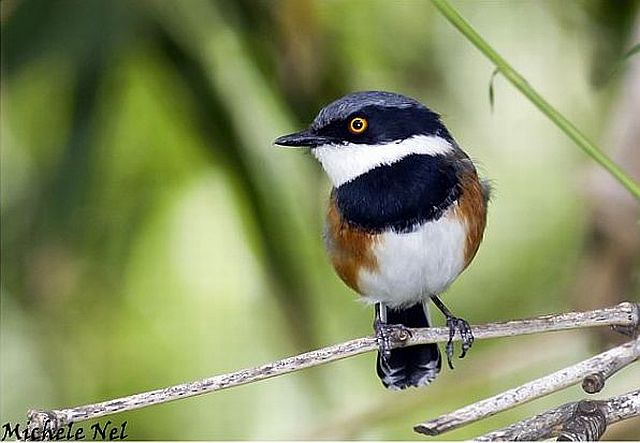
Male




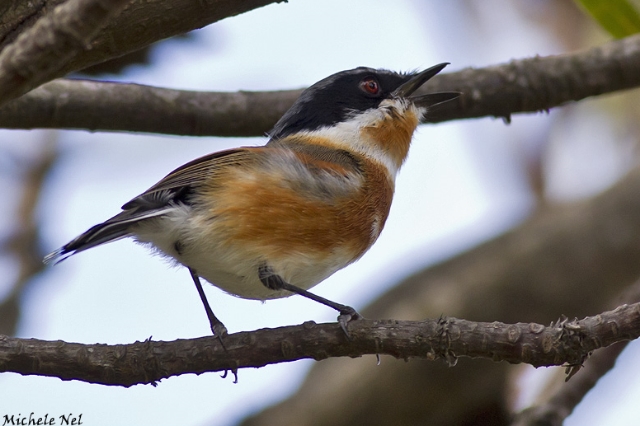
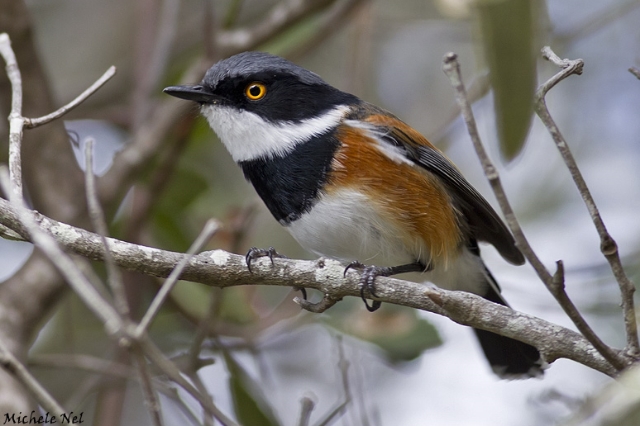
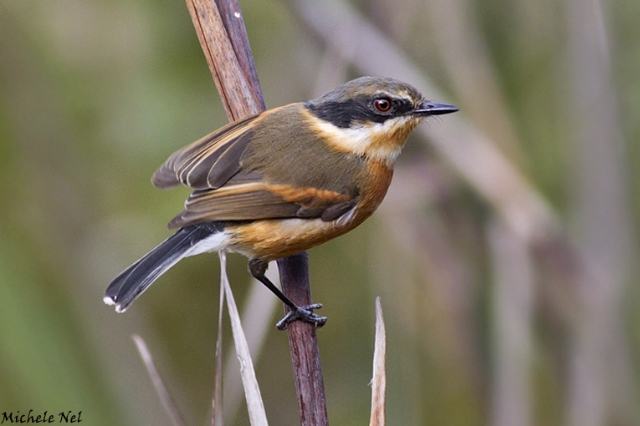
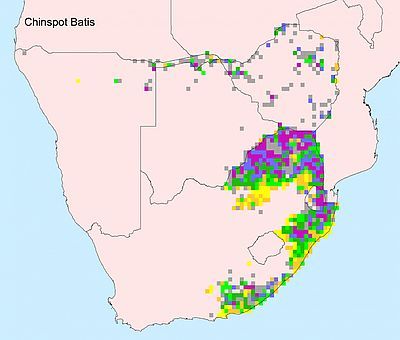
 © Pumbaa
© Pumbaa © Dewi
© Dewi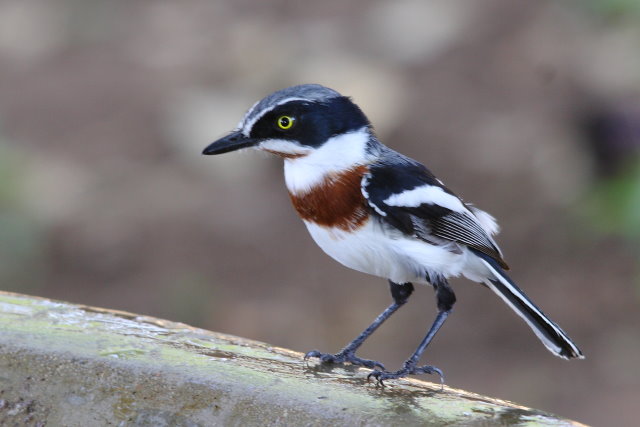 © Flutterby
© Flutterby © BluTuna
© BluTuna © Flutterby
© Flutterby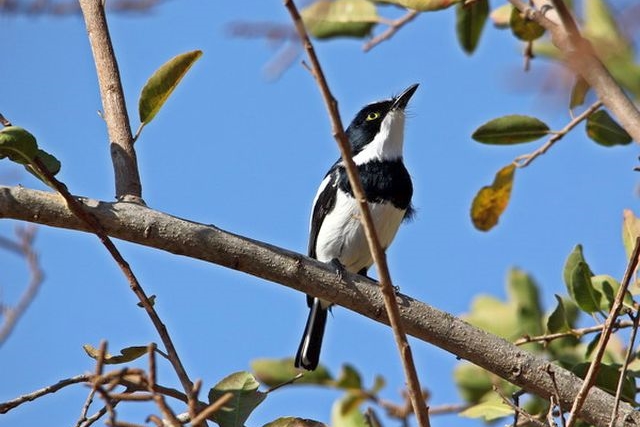 © Bushcraft
© Bushcraft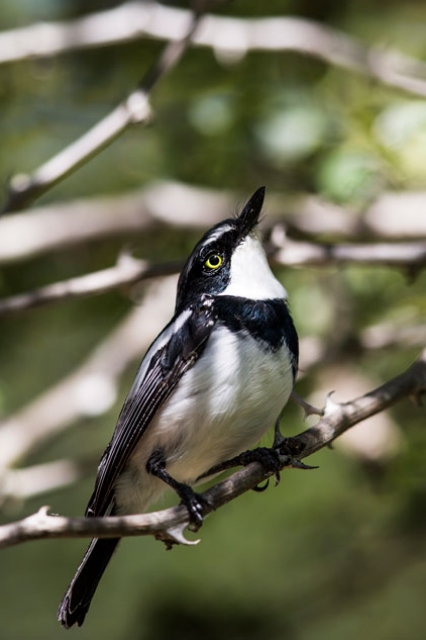 © Pumbaa
© Pumbaa © BluTuna
© BluTuna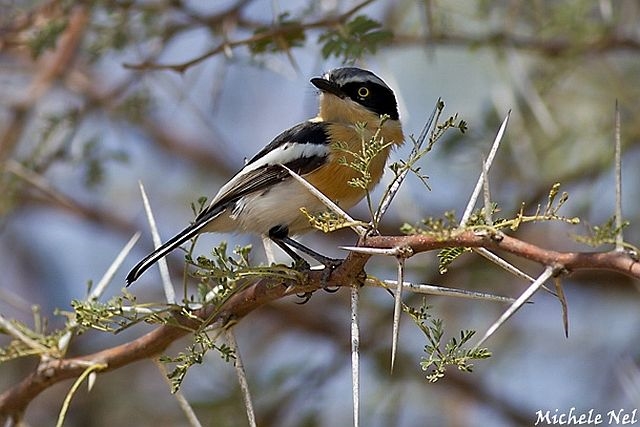

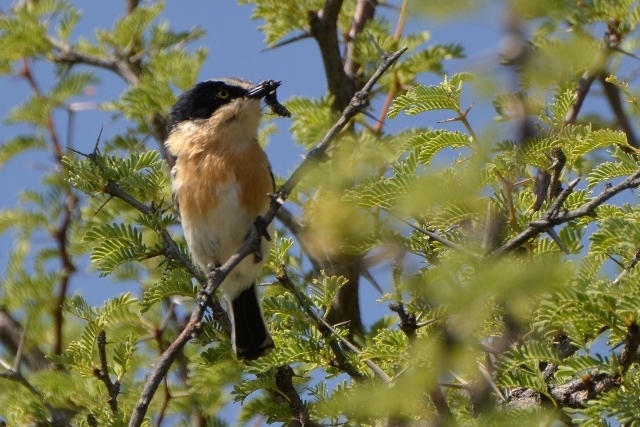 © Mel
© Mel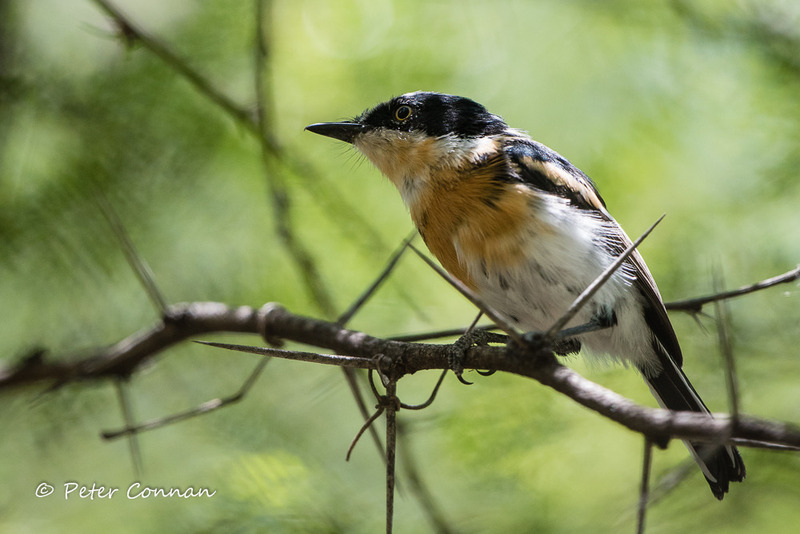
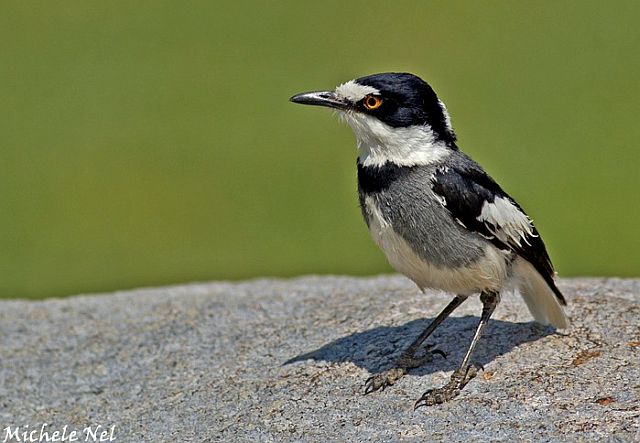
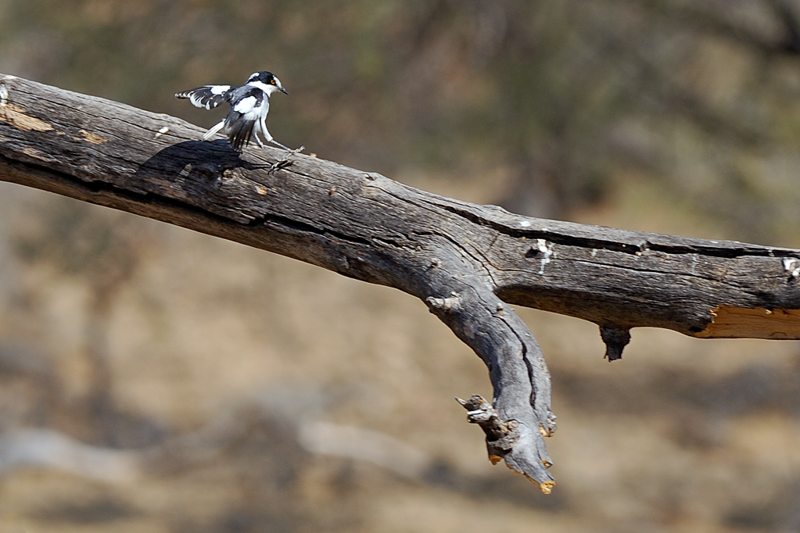

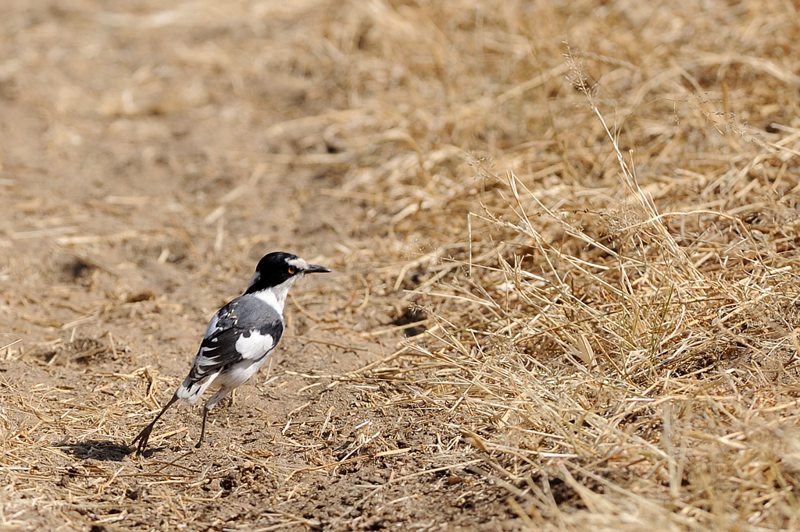

 © mposthumus
© mposthumus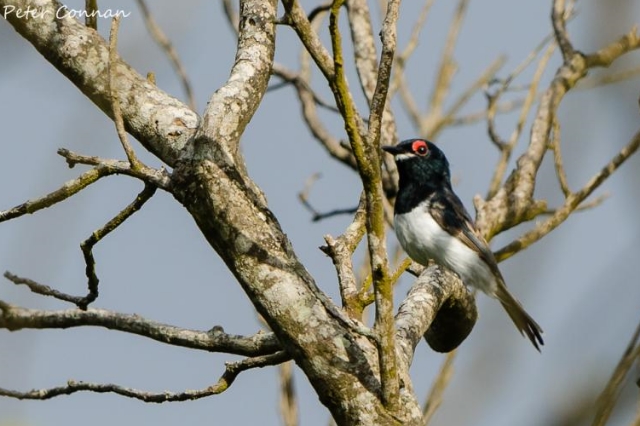 © Peter Connan
© Peter Connan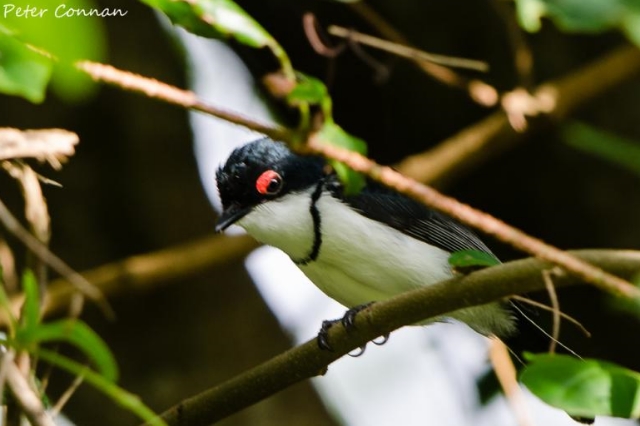 © Peter Connan
© Peter Connan © mposthumus
© mposthumus © mposthumus
© mposthumus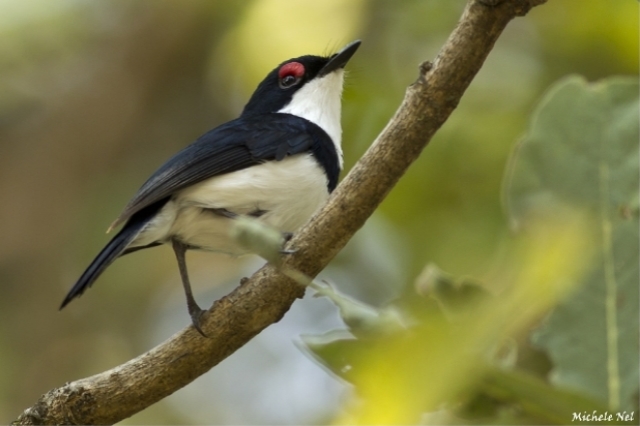 © Michele Nel
© Michele Nel